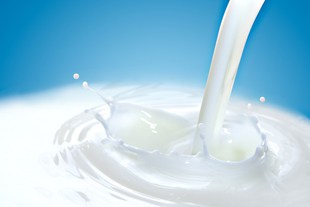Vitamin B2 Fact Sheet
About Vitamin B2
Vitamin B2, or riboflavin, is a water-soluble vitamin, one of eight in the B-complex family linked by common functionality — metabolizing fats and protein into energy, and supporting the health of the skin, hair, eyes, liver and nervous system.
It behaves as an antioxidant neutralizing free radical byproducts of cell metabolism that could otherwise accumulate in the body and damage cell DNA, which can develop into diseases associated with aging, such as heart disease.
Vitamin B2 also converts vitamin B6 and folate into active forms. It is typically available in a well-balanced diet that includes dairy products, meat and poultry and whole grains.
Vitamin B2 disease prevention includes:
- Cataract prevention
- Migraine headache prevention
An increased vitamin B2 intake has been linked by research to a reduced incidence of cataracts, a common eye disease that causes lens clouding and vision loss. In a study of 2,900 49 to 97-year-olds, the cataracts risk reduced by 50% for those whose vitamin B2 dietary intake measured in the highest quintile (4).
A headache occurs for 50 to 75% of adults at least once annually, and 10% of those are migraines. The migraine headache is distinctive because of its intensity – the throbbing pain can be accompanied by aura symptoms, nausea, vomiting and light sensitivity. Migraines may last for hours or days. A theory that the depleted cellular energy reserves of B2 between migraine attacks that sufferers experience is the cause of the condition, supported by success in prevention of migraines with vitamin B2 supplements. In a 5-year study, taking a 400 mg B2 supplement each day decreased migraine occurrence by 800% (5,6).
Vitamin B2 and Aging
Oxidation is an additional age-related disease precursor, which environmental pollutants and the over-burdening of the body’s natural stores of antioxidants exacerbate. Healthy cells are damaged when oxygen circulates in the body, and the resulting free radicals are normally neutralized by the body’s antioxidant defense system. In modern times, however, the sheer high-level load of toxins in the environment resulting from stress increases the number of free radical induced mutations in healthy DNA, which if left untreated replicate and develop disease. To compensate for the extra oxidative damage, supplementing with dietary or nutraceutical antioxidants is necessary to help prevent disease. In the laboratory, vitamin B2’s antioxidant properties protect tissues from UV rays (7).
Do I Have a Deficiency of Vitamin B2?
A poor diet and impaired digestive absorption are risk factors for vitamin B2 deficiency, which could be an issue for those who consume alcohol excessively and older people.
A study of 65 to 90-year-old adults found that approximately 25% consumed less than the standard vitamin B2 recommendation, and 10% were biochemically deficient.
Deficiency symptoms include fatigue, digestive problems, cracking and sores at the corners of the mouth, a magenta-colored and swollen tongue; eye fatigue, sensitivity to light, and swelling and soreness of the throat.
How Can I Add Vitamin B2 to my Diet?
The best dietary sources of riboflavin include brewer’s yeast, organ meats, milk, eggs, yogurt, almonds, wheat germ, whole grains, mushrooms, wild rice, Brussels sprouts, soybeans, spinach, and broccoli. Most cereals and flours are fortified with riboflavin.
Because riboflavin is destroyed by light, food should be stored away from light to protect the riboflavin. Although riboflavin is not damaged by heat, steaming or roasting foods helps to keep the riboflavin that may otherwise be lost through soaking or boiling.
How Much Vitamin B2 Should I Take?
Due to its water solubility, the body’s stores of vitamin B2 must continuously be replenished, with the excess will exiting via the excretory system.
A recommended standard daily dose is:
- Men 19 years and older: 1.3 mg
- Women 19 years and older: 1.1 mg
- Pregnant women: 1.4 mg
- Breastfeeding women: 1.6 mg
For age-related cataract prevention: 1.6 to 2.2 mg per day and as a standard multivitamin supplement, 1.7 mg of riboflavin daily (3).
Riboflavin requirements may be higher for those with hypothyroid disease, adrenal insufficiency, excess alcohol consumption and intense athletic activity conditions.
Side Effects
Taking a high dose of vitamin B2 may result in the following side effects:
- numbness
- itching
- prickling or burning sensations
- yellow or orange urine
- light sensitivity
Because B vitamins function in the body together, taking a B complex rather than a single vitamin B2 supplement ensures balanced ratio maintenance.
A physician can test the blood for vitamin B2, or a nutritionist can analyze the diet to identif total B2 intake from food sources.
Contraindications
A Vitamin B2 supplement may contraindicate with the following medications:
- Antipsychotic medications
- Tricyclic antidepressants such as nortriptyline (Pamelor) and imipramine (Tofranil)
- Tertacycline antibiotics
- Probenecid
- Doxorubicin
- Methotrexate
- Anti-epileptics such as phenytoin
- Thiazide Diuretics (water pills)
References
- University of Maryland Medical Center. “Vitamin B2 (Riboflavin).” June 12, 2011. http://www.umm.edu/altmed/articles/vitamin-b2-000334.htm
- Linus Pauling Institute Micronutrient Information Center. “Riboflavin.” June 2007.http://lpi.oregonstate.edu/infocenter/vitamins/riboflavin/riboflavinrefs.html
- Lopez-Sobaler, A.M., et al. The Journal of Nutrition Health and Aging. “The Influence of Vitamin B2 Intake on the Activation Coefficient of Erythrocyte Glutation Reductase in the Elderly. 2002. http://www.ncbi.nlm.nih.gov/pubmed/11813085?dopt=Abstract
- Cumming, R.G., et al. Ophthalmology. “Diet and cataract: the Blue Mountains Eye Study.” March 2000.http://www.ncbi.nlm.nih.gov/pubmed/10711880
- Robbins, Matthew S., et al. Drugs Aging. Management of Headache in the Elderly. 2010. http://link.springer.com/article/10.2165%2F11315980-000000000-00000
- World Health Organization. Headache Disorders. October 2012. http://www.who.int/mediacentre/factsheets/fs277/en/
- Maseka, Anna, et al. Comptes Rendus Chimie. “Characterisation of the Antioxidant Activity of Riboflavin in an Elastomeric Composite. June 2012 http://www.sciencedirect.com/science/article/pii/S1631074812000306
Last Reviewed 11/Mar/2014
